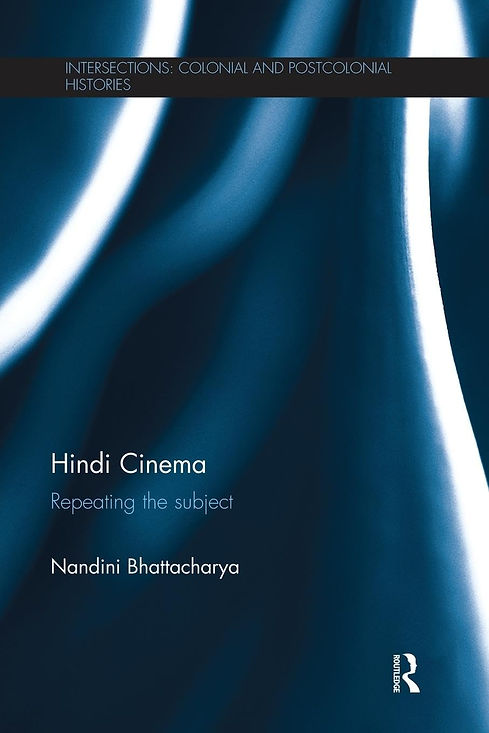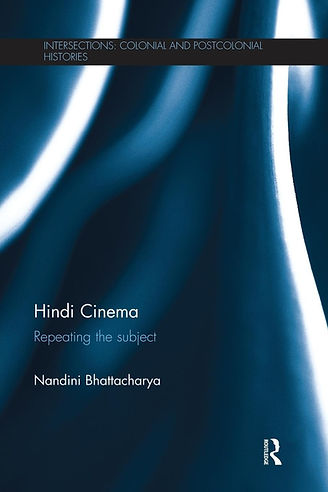NANDINI BHATTACHARYA


Hindi Cinema (Intersections: Colonial and Postcolonial Histories)
Hindi Cinema is full of instances of repetition of themes, narratives, plots and characters. By looking at 60 years of Hindi cinema, this book focuses on the phenomenon as a crucial thematic and formal code that is problematic when representing the national and cinematic subject. It reflects on the cinema as motivated by an ongoing crisis of self-formation in modern India.
The book looks at how cinema presents liminal and counter-modern identities emerging within repeated modern attempts to re-enact traumatic national events so as to redeem the past and restore a normative structure to happenings. Establishing structure and event as paradigmatic poles of a historical and anthropological spectrum for the individual in society, the book goes on to discuss cinematic portrayals of violence, gender embodiment, religion, economic transformations and new globalised Indianness as events and sites of liminality disrupting structural aspirations.
After revealing the impossibility of accurate representation of incommensurable and liminal subjects within the historiography of the nation-state, the book highlights how Hindi cinema as an ongoing engagement with the nation-state as a site of eventfulness draws attention to the problematic nature of the thematic of nation. It is a useful study for academics of Film Studies and South Asian Culture.

Reading the Splendid Body: Gender and Consumerism in Eighteenth-Century British Writing on India
British fiction, ethnographies, and other travel narratives on eighteenth- and nineteenth-century India are examined in this book. British male and female colonialist discourses that constructed Indian women as spectacular, physical objects of the western gaze and as signifiers of indigenous cultural crisis are compared. The British documents examined are from the early 1600s to the 1830s.
Slavery, Colonialism and Connoisseurship: Gender and Eighteenth-Century Literary Transnationalism
Colonization, slavery, traffic in women, and connoisseurship seem to have particularly captured the imaginations of circumatlantic writers of the later eighteenth century. In this book, Nandini Bhattacharya examines the works of such writers as Richard Brinsley Sheridan, George Colman Jr., James Cobb and Phillis Wheatley, who redefined ideas about Value and Taste. Writers re-presented the ethical debate on Value and trade through aesthetic metaphors and discourse, thus disguising the distasteful nature of the ownership and exchange of human beings and mitigating the guilt associated with that traffic. Bhattacharya explores the circumatlantic redefinition of Taste and Value as cultural and moral concepts in gender and racial discourses in slave-owning, colonizing, and connoisseurial Britain, and demonstrates how Value and aesthetics were redefined in late eighteenth-century circumatlantic discourses with particular focus on the language of slavery, trade and connoisseurship. She also delineates the workings of transnational consciousness and experience of race, class, gender, slavery, colonialism and connoisseurship in the late eighteenth-century circumatlantic rim. Throughout the study, Bhattacharya rereads late eighteenth-century British literature as a stage for the articulation of theories of difference and domination.
.jpg)


